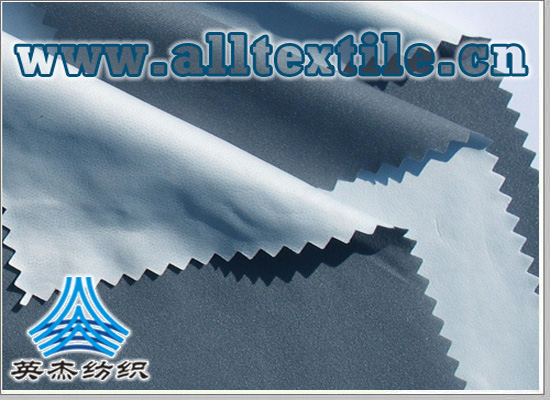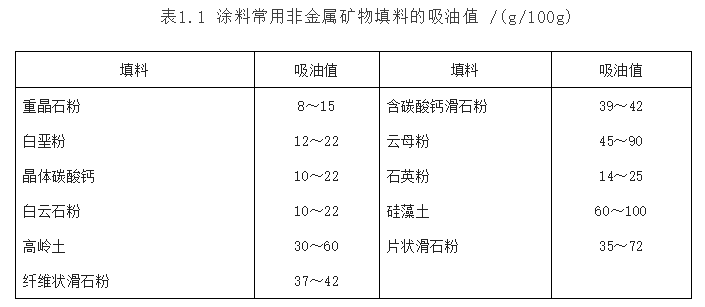Coatings | Summary of application characteristics of mineral fillers in coatings
1 Overview
Paint is a solid powder state or thick slurry state that is in a flowing state or can be liquefied. It can be evenly coated and firmly adhere to the surface of the object being coated, and plays a decorative, protective and special role on the object being coated. , or several film-forming substances that have both functions.
In addition to paint, coating products also include solvent-based coatings, latex-based coatings, water-soluble coatings, powder coatings, etc. produced using various synthetic resins, emulsions, etc. as main raw materials.
Inorganic fillers in coatings are also called extender pigments and sometimes pigment extenders. They can be divided into non-functional fillers and functional fillers. The former mainly plays an incremental role to reduce the raw material cost of the coating; the latter, in addition to its incremental role, also has the function of improving certain properties of the coating or coating film, such as controlling rheology, improving adhesion, controlling gloss, and improving Hiding power, preventing corrosion and optimizing pigment concentration, etc.
Coatings are one of the main users of inorganic fillers. Currently, the world’s coating production is about 23 million tons/year, and the total filler consumption is about 6 million tons/year. Our country has become one of the largest coating production countries in the world. It currently produces about 3 million tons of coatings per year and consumes approximately 800,000 to 1 million tons of inorganic fillers per year.

2. Functions and requirements of fillers in coatings
Fillers (extender pigments) in paint are usually white or slightly colored pigments with a refractive index less than 1.7. It has the basic physical and chemical properties of paint pigments, but because its refractive index is similar to that of film-forming substances, it is transparent in paints and does not have the tinting power and hiding ability of colored pigments. It is an indispensable pigment in paints. . Since most of the fillers come from natural ore processing products, they have good chemical stability, wear resistance, water resistance and other properties, and are low in price. They play a skeleton role in the coating. Through filling, the thickness of the coating film is increased, the mechanical properties of the coating film are improved, and it can play the roles of durability, anti-corrosion, heat insulation, and matting. On the other hand, it is used as a way to reduce the cost of paint manufacturing, taking advantage of its low price, which is much lower than that of color pigments. Under the premise of satisfying the covering power of the paint film, appropriate addition of extender pigments can supplement the application of color pigments in the paint. Some volume.
The use of fillers in coatings does not only reduce costs. The main functions and functions of fillers are:
1) It plays the role of skeleton and filling in the paint, increasing the thickness of the paint film and making the paint film plump and solid;
2) Adjust the rheological properties of the coating, such as thickening, anti-sedimentation, etc.;
3) Improve the mechanical strength of the paint film, such as improving wear resistance and durability;
4) Adjust the optical properties of the coating and change the appearance of the coating film, such as matting;
5) The film-forming substances react chemically to form a whole, so that the coating film can effectively block the penetration of light, improve its water resistance and weather resistance, and extend the service life of the coating film;
6) As a filler in coatings, it can reduce the amount of resin and reduce production costs;
7) Play an auxiliary role in the chemical properties of the coating film, such as enhancing rust prevention, moisture resistance, flame retardancy, etc.
8) Different coating varieties and grades have different technical requirements for fillers, but the general requirements for fillers for coatings are as follows.
9) The whiteness should be high, especially in coatings that have high requirements on the color of the coating film. The whiteness is generally required to be above 90%.
10) Easy to disperse, which not only helps reduce the energy consumption and time of grinding and dispersion during paint production, but more importantly, is beneficial to the performance of the paint, because the dispersion of fillers and pigments has a negative impact on the properties of the paint film (gloss, color, Durability, etc.) have a direct impact.
11) It must have lower oil absorption. Low oil absorption value can increase the critical pigment volume concentration (CPVC) of the paint, save resin base materials, meet the requirements of modern high-solid paints that meet environmental protection requirements, and prepare higher-content paints. Only the pre-dispersed filler slurry can be matched with pigments (especially titanium dioxide) whose oil absorption value is decreasing day by day. The oil absorption values of non-metallic mineral fillers commonly used in coatings are shown in Table 1.1

12) There should be a certain particle size and narrow particle size distribution, and the sieve residue should be as low as possible. Nowadays, coatings require fillers to have finer or even ultrafine particle sizes in many application fields, so that they can make full use of their space in the coating. The spacing effect makes the pigment particles in the coating film evenly distributed, thereby maximizing the pigment’s covering (such as titanium dioxide), coloring (such as color pigments) and anti-rust (such as anti-rust pigments) potential, and partially replacing The role of pigments.
13) It can make the coating have good rheology (fluidity, leveling, suspension, thickening, etc.), so that the coating will not settle during storage, facilitate construction and film formation, and form a smooth and smooth coating film.
14) It should have good compatibility with the base materials, pigments and other additives in the paint.��Barium sulfate has excellent color and fine particles.
Barite powder filler is mainly used in industrial primers and automotive intermediate coatings that require high coating strength, high filling power and high chemical inertness. It is also used in topcoats that require higher gloss. In latex paint, due to the high refractive index of barite (1.637), fine barite powder can function as a translucent white pigment and can replace part of the titanium dioxide in the paint.
6) Wollastonite
The main component of wollastonite is calcium metasilicate (CaSiO3), which has a needle-like structure, good brightness, refractive index (1.62) and relatively low oil absorption (20-26g/100g).
Wollastonite can be used as an extender pigment and as a substitute for part of the white pigment in paints to cover and increase the paint cost. Keeps white paint bright and bright for a long time.
Wollastonite with a needle-like structure (length-to-diameter ratio 10:1 to 20:1) can act as a flattening agent in coatings, improve the mechanical strength of coatings, and sometimes replace harmful asbestos in reinforced coatings. Generally, finer-grained (such as 325 mesh) and fine-grained (10um) wollastonite powders are used in coatings because they are beneficial to the hiding power of coatings. It can be used in oil-based architectural coatings, sound-absorbing (sound-insulating) coatings, road marking paints, polyvinyl acetate latex paints, etc. Surface-treated wollastonite can be used in industrial alkyd, epoxy and other anti-corrosion coatings to improve the anti-corrosion properties of metal primers and partially replace reactive anti-rust pigments.
7) Mica powder
Muscovite is mainly used in coatings, and phlogopite can also be used in small amounts. It is mainly used as a filler in anti-corrosion coatings and functional coatings due to its high-diameter-thickness ratio flaky structure, good heat resistance, weather resistance, transparency, chemical resistance, UV shielding and other properties. It is mainly used in some special oil-based and water-based coatings in coating formulations, and its dosage ranges from about 20% of industrial coatings to about 40% of relief pattern architectural coatings.
An important application area of wet-ground mica powder is as a carrier material for titanium pearlescent pigments. Coatings, inks, plastics and other industries all require different specifications of titanium mica pearlescent pigments.
8) Graphite
Natural graphite can be used in steel structure maintenance coatings because of its flaky structure and good hiding rate; its good conductivity and black color make it useful in electronic computer shielding coatings, which can contain up to 75% graphite. Another use is in anti-static floor coatings. It can be used in heat-resistant coatings, primers, sealers and water-resistant coatings. Due to its good light resistance, it can be used in automotive paints as an effect pigment.
9)Aluminum hydroxide
In the category of inorganic flame retardant additives, aluminum hydroxide is the most widely used and widely used. It not only has good flame retardant properties, but also can prevent smoke, dripping, and toxic gases. Therefore, it has been widely used. , the usage is also increasing year by year. Scope of application: thermosetting plastics, thermoplastic plastics, synthetic rubber, coatings and building materials industries.
As an inorganic flame retardant, aluminum hydroxide has excellent flame retardant effects, but its filling amount has a certain high standard. Such a high filling amount will inevitably affect the compatibility and mechanical properties of polymers and inorganic fillers. , causing the performance of flame retardant products to be seriously affected. In view of the above reasons, more and more individuals or research institutions are surface-modifying aluminum hydroxide (we call it activation), and activated aluminum hydroxide is produced. The molecular formula of activated aluminum hydroxide is AL(OH)3 or AL2O3·3H2O, with a molecular weight of 78. It is a white powder that mainly contains aluminum hydroxide, coupling agents, etc.
Activated aluminum hydroxide, which uses high-quality raw materials, is crushed and classified by ultra-fine airflow, and surface-activated by the coupling agent, essentially solves the defects of traditional aluminum hydroxide. 1. Activated aluminum hydroxide is an additive halogen-free smoke suppressant and flame retardant. It is characterized by large addition amount, good flame retardant effect and low cost. It greatly improves the arc resistance of the material, enhances the impact strength and Bending strength. 2. Its surface area has increased, increasing fluidity, uniform particle size distribution, good stability, and no corrosive gases. It has good dispersion in the resin and is less prone to bending and whitening when added in larger amounts. When used in plastics, it does not evaporate or bleed, and can be retained in plastics for a long time. Has good compatibility with many other substances.
Application scope of activated aluminum hydroxide
The application range of activated aluminum hydroxide in the production of products has been greatly expanded. Especially in recent years, the application of activated aluminum hydroxide in wires and cables has made substantial breakthroughs. Aluminum hydroxide is used as a Flame retardant fillers more efficiently improve the electrical performance of wires and cables, while also increasing the flame retardant capabilities of wires and cables and achieving low pollution. In addition, activated aluminum hydroxide is used in insulation materials, flame-retardant hoses, tapes, hair dryer cloth, electrical materials, etc.
Note: Activated aluminum hydroxide should be stored in a dry and ventilated warehouse, and should be protected from moisture, rain and packaging damage during transportation.





